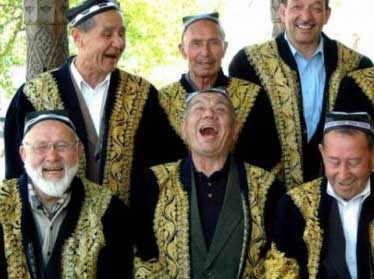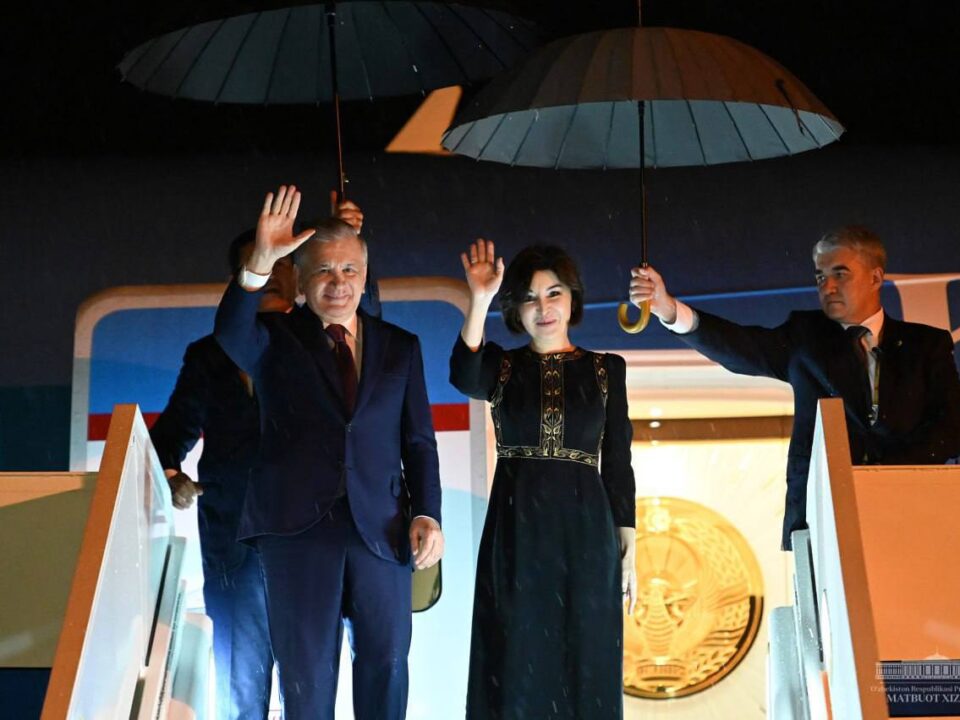Culture
 Uzbek folklore has a multi-genre character. Its integral part and an inexhaustible source is “Askia” – wittiness, which can be defined as a satirical comic genre. Askia – reaction of quick wit and ingenuity, the ability of human impromptu eloquently and clearly express their thoughts, as well as match the gifted talents, the art of words and at the same time artistic controversy.
Uzbek folklore has a multi-genre character. Its integral part and an inexhaustible source is “Askia” – wittiness, which can be defined as a satirical comic genre. Askia – reaction of quick wit and ingenuity, the ability of human impromptu eloquently and clearly express their thoughts, as well as match the gifted talents, the art of words and at the same time artistic controversy.
The term “askia” is derived from the Arabic word “zakiy” in the singular i.e. shrewd, smart, capable. Askia – the plural of the word with the change of the letter “z” to “a” in the Uzbek language. Over time, it came to mean a contest of wits, which is usually organized in the presence of many people at weddings, festivals and mass popular festivities, which explains diversity of laughter caused by the specifics of the genre.
The dialogue involves two people, or two groups of askia-masters. With the help of word games each party expressing original thoughts, trying to get ahead of their “opponent” in the selection of targeted phrases and win the “battle”. Quickness of askia-master’s response is crucial. When he pauses, ponders what to say, searches for a word, the sharpness of his mind and temperament decline, losing the originality of the answer, as a rule, it means that he is not very knowledgeable in the chosen topic for debate or is not ready to be presented at such meetings. This in turn means that participants of such events should be mentally alert, comprehensively competent people, who can quickly and originally think and respond, using humor and jokes to great effect.
 Life stories, images of other people and their daily dialogue taking place in society and the family, are transferred to the witty, playfully constructed sentences, rich in homonyms, phraseology, proverbs, aphorisms and idiomatic slang words, metaphors. Usually askia-masters widely use logical stress on words and syllables, which help to make their art understandable, unusually accessible to the masses. Attaching the words vitality, without which Askia would become a normal conversation, they use art as a means – a comparison, irony, sarcasm, hyperbole, that enriches their answers and questions, making them more powerful and caustic. Proposals are made in different ways, intonation of participants of battle of wits depends on their dialect too. An abstraction in askia plays an important role.
Life stories, images of other people and their daily dialogue taking place in society and the family, are transferred to the witty, playfully constructed sentences, rich in homonyms, phraseology, proverbs, aphorisms and idiomatic slang words, metaphors. Usually askia-masters widely use logical stress on words and syllables, which help to make their art understandable, unusually accessible to the masses. Attaching the words vitality, without which Askia would become a normal conversation, they use art as a means – a comparison, irony, sarcasm, hyperbole, that enriches their answers and questions, making them more powerful and caustic. Proposals are made in different ways, intonation of participants of battle of wits depends on their dialect too. An abstraction in askia plays an important role.
Askia has its artistic composition: its story and its elements – culmination and outcome. Peak of askia is achieved when entering the flow of consecutive thought, until the end of revealing a particular theme. Within mutual competition, each side strives to excel in wit, that it develops the meaning of mutual conversation. The moment of the deepest expressions of themes and content of a comprehensive disclosure is a culminating point of askia and it’s conclusion. A sign of victory is considered infinite, prolonged laughter of the audience. Askia is a stable, reassuring genre of folk art. At the same time it is an integral part of the satire and humor that reveal shortcomings of our society, expose obscene and ugly phenomena, which eradicate all negative things.
This genre of oral creativity, which has already become a tradition exists among the Uzbek people for centuries. This is according to scientists, writers, confirming that Askia was transferred to India by lashkars (soldiers) of Babur. Along with this, the founder of Uzbek literature Alisher Navoi in his works “Leyli and Majnun” and “Farhad and Shirin” describes how to perform songs, music, dance, clowning, wit during the festivities. Living in Herat, Navoi gathered around him more than twenty masters of wittiness, and he called Mohammed Badakhshi as the teacher (“pir”) of askia-masters.
Along with this, the famous Uzbek writer Abdulla Kadiri in his novel “Scorpion from the altar” also describes how askia-master – clown Zakir-gov exposed the hypocrisy of Khan and his nobles. These examples show that for a long time Askia was common in the lives of the people. Especially, it has evolved in the Ferghana Valley – Kokand, Margilan, Andijan and Tashkent and Jizzakh. Such masters of words as Dehkan Yuzbashi Shernazarov, Erka kari Karimov, Yusufjan kizik Shakardjanov, Tursunbuva, Domla-aka, Alimdjan aka, Ismaildzhan aka, Mamayunus aka, Aka Bukhara, Mirshahid Mirakilov, Saidahmad-Askia, Domla aka Vakhobov, Nasir Mansurov, Mamarazyk Iskhakov, Ibragimdjan Juraev, Rasulkari Mamadaliev, Shakasim Shadzhalilov, Akmalhan Tuichiev, Qayyum Mirzaakhmedov and others were very popular among the people, and have received great popularity in the late XIX and XX centuries. It should also be noted such askia-masters as Ganidjan Tashmatov, Jurakhon Sultanov, Arif Hatamov, Halililla Hikmatillaev brothers Shaalim and Shaakbar Shadjalilovs, successfully performed in Tashkent in the second half of the twentieth century.
It is noteworthy that in the late twentieth century, Askia, which was considered only a man’s sphere of activity and creativity, began to attract and women. Thus, the Uzbek actress Lyutfihanum Sarimsakova, Tamarahanum Petrosyan, Mukarramah Turgunbaeva and others also competed in wittiness. Currently Askia, enriching its content in a more perfect forms, continues to live in our country. This is confirmed by the fact that among the people there are now hundreds of thousands of young askia-masters and their admirers. On November 27, 2014, the Committee for the Safeguarding of the Intangible Cultural Heritage at the IX session in Paris included the Uzbek art wit Askia in the Representative List of the Intangible Cultural Heritage of Humanity, which will undoubtedly serve as its preservation and development.


























